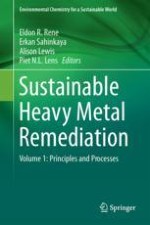2017 | OriginalPaper | Chapter
2. Heavy Metal Removal from Wastewaters by Biosorption: Mechanisms and Modeling
Authors : Stefano Papirio, Luigi Frunzo, Maria Rosaria Mattei, Alberto Ferraro, Marco Race, Berardino D’Acunto, Francesco Pirozzi, Giovanni Esposito
Published in: Sustainable Heavy Metal Remediation
Publisher: Springer International Publishing
Activate our intelligent search to find suitable subject content or patents.
Select sections of text to find matching patents with Artificial Intelligence. powered by
Select sections of text to find additional relevant content using AI-assisted search. powered by
